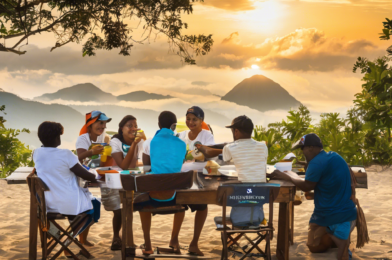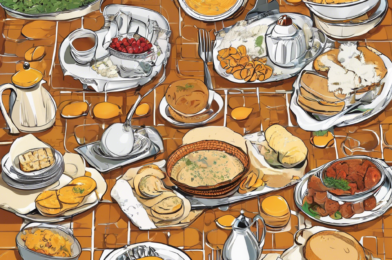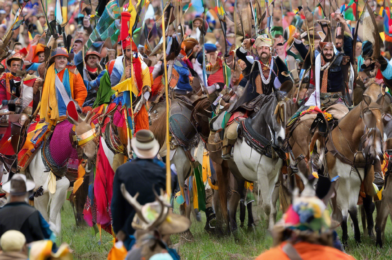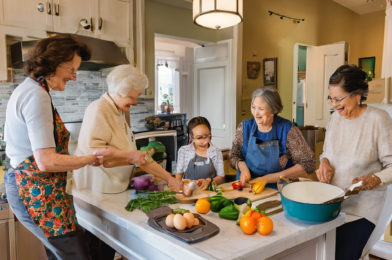Volunteer Vacations: Meaningful Ways to Connect While Giving Back
The travel landscape continues evolving beyond traditional sightseeing toward experiences offering deeper meaning and connection. Among these transformative approaches, volunteer vacations stand out by combining exploration with purpose—creating opportunities to immerse yourself in communities while contributing skills and energy toward meaningful projects. This powerful combination delivers benefits extending far beyond typical tourist encounters, forging authentic relationships and lasting memories impossible to create through conventional travel.
Why Volunteer Vacations Transform Travel Experiences
Traditional tourism often creates artificial barriers between visitors and local communities, with interactions limited to service transactions or brief, superficial exchanges. Volunteer travel fundamentally reshapes this dynamic through shared purpose and collaborative effort.
Authentic Community Engagement
When participating in volunteer projects, you naturally step outside the typical tourist bubble. Working alongside local community members toward common goals establishes genuine connections based on mutual respect rather than commercial transactions. These relationships develop through shared challenges, celebrated accomplishments, and daily interactions that reveal cultural nuances invisible to conventional travelers.
Morning coffee breaks with fellow volunteers from the host community frequently lead to invitations extending beyond project boundaries—home-cooked meals, family celebrations, or local gatherings rarely accessible through standard tourism channels. Your identity transitions from temporary visitor to welcomed contributor, opening doors throughout the community.
Skill Exchange Beyond Financial Contribution
While monetary tourism undoubtedly supports local economies, volunteer vacations facilitate multidimensional exchanges where both visitors and communities benefit meaningfully. Your professional expertise, whether in education, construction, healthcare, or numerous other fields, creates lasting impact when shared purposefully with organizations addressing community-identified needs.
Simultaneously, local knowledge transfers to you through daily collaboration—traditional building techniques, sustainable agricultural practices, or cultural approaches to problem-solving that might transform your perspective long after returning home. This reciprocal learning creates balanced relationships rare in conventional tourism contexts.
Deeper Cultural Understanding Through Shared Purpose
Working alongside community members reveals cultural values, priorities, and approaches impossible to observe through brief encounters. Project challenges frequently highlight different problem-solving methodologies, communication styles, and relationship structures that define community function beyond surface appearances.
Your extended engagement through volunteer work provides context for understanding cultural elements that might otherwise seem puzzling or inaccessible. Morning project meetings, shared meals during work breaks, and evening reflections create natural opportunities for questions and conversations impossible during typical tourist interactions.
Finding Appropriate Volunteer Opportunities
Matching your skills, available time, and values with suitable projects requires thoughtful consideration across several dimensions:
Aligning Skills With Community Needs
Effective volunteer contributions depend on matching your capabilities with genuine community requirements. Consider these common volunteer categories when exploring options:
- Educational Support: Teaching English, computer skills, or specialized subjects within established programs
- Environmental Conservation: Participating in reforestation, wildlife protection, or sustainable agriculture initiatives
- Construction Projects: Assisting with building or renovation efforts for community facilities
- Healthcare Initiatives: Providing medical or wellness services within appropriate qualification boundaries
- Cultural Preservation: Supporting documentation or revitalization of traditional practices
Honest assessment of your abilities ensures meaningful contribution without displacing local employment opportunities. Recognize that enthusiasm alone, without relevant skills, sometimes creates additional burdens rather than benefits for host organizations.
Evaluating Organization Ethics and Practices
Unfortunately, some volunteer programs prioritize visitor experience over community benefit, creating questionable impact despite good intentions. Thoroughly research potential organizations considering:
- Community Leadership: Do local stakeholders direct project priorities and implementation?
- Sustainable Models: Will initiatives continue positively impacting communities after volunteers depart?
- Transparency: Does the organization clearly communicate how participant fees support projects?
- Local Employment: Does the program create jobs within the community rather than replacing them?
Reputable organizations willingly answer detailed questions about their operational models and community relationships. Your research protects both communities and personal experience from potentially exploitative programs designed primarily for profit rather than impact.
Matching Time Availability With Project Requirements
Volunteer opportunities range from single-day experiences to multi-month commitments, each offering different benefits and limitations:
- Short-Term Options (1-2 weeks) work well for travelers with limited availability but typically suit specific project types like construction or event support
- Medium-Duration Programs (3-4 weeks) allow deeper community integration while accommodating standard vacation periods
- Extended Commitments (2+ months) provide transformative immersion experiences while supporting projects requiring consistency
When selecting timeframes, consider realistic project contribution potential. Some initiatives require consistent presence to build necessary relationships and skills, while others accommodate rotating volunteer participation without disruption.
Preparing For Meaningful Volunteer Experiences
Maximizing both contribution value and personal growth requires thoughtful preparation beyond standard travel planning:
Cultural Research Beyond Tourist Guides
Before departure, invest time understanding cultural contexts beyond basic etiquette. Consider:
- Historical backgrounds influencing current community dynamics
- Local decision-making structures and leadership patterns
- Communication styles regarding disagreement or problem-solving
- Gender role expectations potentially affecting your participation
This knowledge helps navigate daily interactions respectfully while providing context for observations during your experience. Community partners appreciate volunteers demonstrating genuine interest in cultural understanding beyond superficial aspects.
Setting Realistic Expectations
Volunteer vacations sometimes present challenges different from anticipated experiences. Managing expectations helps navigate potential adjustment periods:
- Project needs often evolve between registration and arrival
- Living conditions frequently differ significantly from standard tourist accommodations
- Work schedules may follow local patterns unfamiliar to your normal routine
- Visible impacts sometimes develop more slowly than expected
Approaching these differences with flexibility rather than disappointment transforms potential frustrations into growth opportunities. Your adaptability significantly influences both contribution effectiveness and personal satisfaction throughout the experience.
Preparing For Emotional Dimensions
Many volunteer travelers report emotional responses stronger than anticipated, particularly when working with vulnerable populations or witnessing challenging conditions firsthand. Consider:
- Establishing support systems both locally and remotely
- Journaling regularly to process experiences
- Creating space for reflection between service activities
- Recognizing limits regarding emotional capacity
These practices help integrate powerful experiences while maintaining well-being throughout your volunteer period. Processing emotional responses thoughtfully enhances learning while preventing potential burnout.
Beyond The Volunteer Period: Extending Impact
Meaningful volunteer vacations frequently catalyze ongoing relationships and contributions extending far beyond initial travel periods:
Maintaining Community Connections
Many volunteers develop lasting relationships with community members that continue enriching lives long after returning home:
- Digital communication platforms facilitate ongoing conversations
- Skill sharing continues through virtual collaboration
- Cultural exchange deepens through sustained dialogue
- Future visits transform from tourism to reunion
These evolving relationships often become the most treasured outcomes from volunteer experiences, creating global connections that transcend initial service contexts.
Advocating For Communities Served
Your firsthand experience provides authentic perspective valuable for advocacy efforts supporting communities facing challenges:
- Sharing nuanced stories countering oversimplified narratives
- Supporting fundraising initiatives with personal testimonials
- Connecting community organizations with additional resources
- Educating others about responsible engagement approaches
This informed advocacy frequently proves more valuable than initial on-site contributions, particularly when amplifying community voices rather than speaking for them.
Integrating Lessons Into Daily Life
Perhaps most significantly, volunteer travel experiences often transform perspectives and practices within your home context:
- Problem-solving approaches incorporate methods observed during service
- Consumption patterns shift based on firsthand understanding of global impacts
- Community engagement increases through skills practiced abroad
- Career directions sometimes realign toward greater purpose alignment
These integrations extend volunteer experience benefits far beyond travel periods, creating lasting impact through transformed daily choices and priorities.
Conclusion: Traveling With Purpose
Volunteer vacations offer remarkable opportunities for connection and contribution when approached thoughtfully. By matching your skills with genuine community needs, researching organizations thoroughly, and preparing appropriately for cultural engagement, your travel transforms from simple recreation into meaningful exchange benefiting everyone involved.
The memories created through shared purpose—celebrating project milestones alongside community members, navigating challenges collaboratively, and exchanging perspectives over shared meals—frequently become life highlights referenced for decades afterward. While photographs from traditional vacations eventually gather dust, relationships formed through volunteer experiences often continue evolving throughout lifetimes.
As you consider future travel plans, explore how incorporating service elements might deepen your experience while creating positive impact. The resulting connections and contributions might just transform your understanding of both travel and global citizenship in unexpected and beautiful ways.




